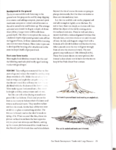AlainK
Imperial Masterpiece
In which occasion (if any) could a JM be safely chopped during the active growing season to a point where there are not any lower shoots/branches on the trunk?
It depends : if you can see horizontal "lines" on the trunk and chop above, it will backbud, especially when donr early in the season and providing the cut is sealed.
It can be done : show us a photo with details if you want a more accurate answer, but yes, it's definitely a possibility. Sorry Derek7745, but I have to contradict you : it is possible
EDIT : oh, you wrote "safely" ?
Then you're (partly) right, anything done, meddling with a living thing is never safe. But that's "making a decision", you must know, "feel" your trees, and then, take a deep breath and plunge...




 20190201_172729
20190201_172729 20190227_152425
20190227_152425 2019-04-12_05-54-19
2019-04-12_05-54-19


